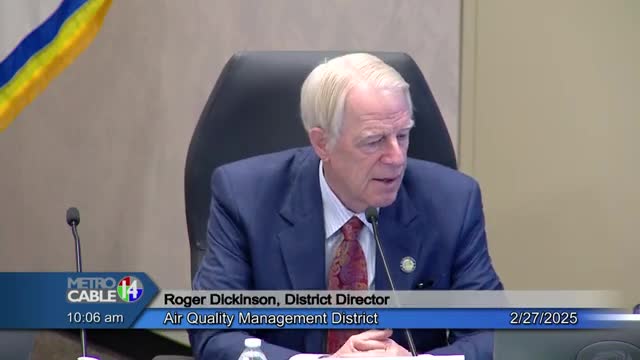Sacramento biomass project targets agricultural waste to reduce burning practices
February 28, 2025 | Sacramento County, California
This article was created by AI summarizing key points discussed. AI makes mistakes, so for full details and context, please refer to the video of the full meeting. Please report any errors so we can fix them. Report an error »

In a recent Sacramento County government meeting, discussions centered around innovative solutions for managing agricultural waste and reducing air pollution. A key focus was on a biomass project aimed at converting agricultural byproducts into energy, which could significantly impact local farming practices and environmental health.
The project, primarily involving a timber harvester, aims to utilize biomass from various sources, including orchard removals and agricultural waste from both Sacramento and neighboring counties. The initiative is designed to address the challenge of agricultural burning, which has been a concern for air quality in the region. By converting waste materials, such as rice hulls and walnut shells, into syngas—a cleaner energy source—the project seeks to provide an alternative to burning, which contributes to air pollution.
One of the highlights of the meeting was the emphasis on the economic viability of this biomass conversion process. The project leaders noted that they would pay agricultural producers to transport their waste to processing facilities, creating a financial incentive for farmers. This approach not only helps manage waste but also supports local agriculture by reducing disposal costs.
While the project is still in its early stages, officials expressed optimism about its potential to demonstrate a sustainable model for biomass utilization. They acknowledged the logistical challenges of maintaining a consistent supply of biomass but emphasized their commitment to sourcing materials primarily from Sacramento County.
The meeting also touched on the broader implications of this initiative, particularly in light of potential future regulations on agricultural burning. By proactively developing alternative waste management solutions, Sacramento County aims to stay ahead of environmental regulations while fostering economic growth in the agricultural sector.
As the project progresses, it will be crucial for local stakeholders to monitor its impact on both air quality and the agricultural economy, ensuring that the benefits extend to the community at large. The discussions from this meeting reflect a growing recognition of the need for innovative approaches to environmental challenges, with the potential for significant positive outcomes for Sacramento County residents.
The project, primarily involving a timber harvester, aims to utilize biomass from various sources, including orchard removals and agricultural waste from both Sacramento and neighboring counties. The initiative is designed to address the challenge of agricultural burning, which has been a concern for air quality in the region. By converting waste materials, such as rice hulls and walnut shells, into syngas—a cleaner energy source—the project seeks to provide an alternative to burning, which contributes to air pollution.
One of the highlights of the meeting was the emphasis on the economic viability of this biomass conversion process. The project leaders noted that they would pay agricultural producers to transport their waste to processing facilities, creating a financial incentive for farmers. This approach not only helps manage waste but also supports local agriculture by reducing disposal costs.
While the project is still in its early stages, officials expressed optimism about its potential to demonstrate a sustainable model for biomass utilization. They acknowledged the logistical challenges of maintaining a consistent supply of biomass but emphasized their commitment to sourcing materials primarily from Sacramento County.
The meeting also touched on the broader implications of this initiative, particularly in light of potential future regulations on agricultural burning. By proactively developing alternative waste management solutions, Sacramento County aims to stay ahead of environmental regulations while fostering economic growth in the agricultural sector.
As the project progresses, it will be crucial for local stakeholders to monitor its impact on both air quality and the agricultural economy, ensuring that the benefits extend to the community at large. The discussions from this meeting reflect a growing recognition of the need for innovative approaches to environmental challenges, with the potential for significant positive outcomes for Sacramento County residents.
View full meeting
This article is based on a recent meeting—watch the full video and explore the complete transcript for deeper insights into the discussion.
View full meeting
